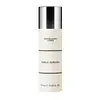What's inside
What's inside
 Benefits
Benefits

 Concerns
Concerns

 Ingredients Side-by-side
Ingredients Side-by-side

Water
Skin ConditioningGlycerin
HumectantAloe Barbadensis Leaf Juice
Skin ConditioningAvena Sativa Meal Extract
SoothingCucumis Sativus Fruit Extract
EmollientLactococcus Ferment Lysate
Skin ConditioningEpilobium Fleischeri Extract
Skin ConditioningPanax Ginseng Root Extract
EmollientTephrosia Purpurea Seed Extract
Skin ConditioningBifida Ferment Lysate
Skin ConditioningLactis Proteinum
Skin ConditioningLactose
HumectantPentylene Glycol
Skin ConditioningPropylene Glycol
HumectantButylene Glycol
HumectantPEG-40 Hydrogenated Castor Oil
EmulsifyingPropanediol
SolventSodium PCA
HumectantPPG-26-Buteth-26
Skin ConditioningDisodium EDTA
Phenoxyethanol
PreservativeSodium Benzoate
MaskingParfum
MaskingWater, Glycerin, Aloe Barbadensis Leaf Juice, Avena Sativa Meal Extract, Cucumis Sativus Fruit Extract, Lactococcus Ferment Lysate, Epilobium Fleischeri Extract, Panax Ginseng Root Extract, Tephrosia Purpurea Seed Extract, Bifida Ferment Lysate, Lactis Proteinum, Lactose, Pentylene Glycol, Propylene Glycol, Butylene Glycol, PEG-40 Hydrogenated Castor Oil, Propanediol, Sodium PCA, PPG-26-Buteth-26, Disodium EDTA, Phenoxyethanol, Sodium Benzoate, Parfum
Water
Skin ConditioningPropanediol
SolventPropylene Glycol
HumectantPhenoxyethanol
PreservativeSodium PCA
HumectantSodium Benzoate
MaskingAllantoin
Skin ConditioningChamomilla Recutita Flower Extract
MaskingGlucose
HumectantCucumis Sativus Fruit Extract
EmollientAloe Barbadensis Leaf Juice Powder
Skin ConditioningCamphor
MaskingUrtica Dioica Extract
AstringentEquisetum Arvense Extract
AstringentBetula Alba Leaf Extract
AstringentCI 19140
Cosmetic ColorantPotassium Sorbate
PreservativeCI 14700
Cosmetic ColorantCI 42090
Cosmetic ColorantSodium Hydroxide
BufferingCitric Acid
BufferingWater, Propanediol, Propylene Glycol, Phenoxyethanol, Sodium PCA, Sodium Benzoate, Allantoin, Chamomilla Recutita Flower Extract, Glucose, Cucumis Sativus Fruit Extract, Aloe Barbadensis Leaf Juice Powder, Camphor, Urtica Dioica Extract, Equisetum Arvense Extract, Betula Alba Leaf Extract, CI 19140, Potassium Sorbate, CI 14700, CI 42090, Sodium Hydroxide, Citric Acid
 Reviews
Reviews

Ingredients Explained
These ingredients are found in both products.
Ingredients higher up in an ingredient list are typically present in a larger amount.
This extract comes from cucumber. Cucumbers are mostly made up of water (95%), and the other 5% is composed of: vitamin C, caffeic acid, fatty acids, amino acids, and other minerals.
Cucumbers have anti-inflammatory, barrier repair, and hydrating properties.
They contain shikimate dehydrigenase, an enzyme shown to help reduce inflammation and soothe the skin.
The amino acids found in cucumbers help nourish our skin's natural acid mantle (it's an important part of our skin barrier). This slightly acidic film acts as a barrier to protect us from bacteria, viruses, and other contaminants.
Unless you have an allergy to cucumbers, this is generally a non-irritating ingredient.
Fun fact: Cucumis Sativus is native to South Asia and can now be found on every continent.
Learn more about Cucumis Sativus Fruit ExtractPhenoxyethanol is a preservative that has germicide, antimicrobial, and aromatic properties. Studies show that phenoxyethanol can prevent microbial growth. By itself, it has a scent that is similar to that of a rose.
It's often used in formulations along with Caprylyl Glycol to preserve the shelf life of products.
Propanediol is an all-star ingredient. It softens, hydrates, and smooths the skin.
It’s often used to:
Propanediol is not likely to cause sensitivity and considered safe to use. It is derived from corn or petroleum with a clear color and no scent.
Learn more about PropanediolPropylene Glycol is an odorless, colorless liquid. As a humectant, it helps skin retain moisture. It also aids in delivering active ingredients.
Another role of this ingredient is preventing a product from melting or freezing. Propylene glycol also adds antimicrobrial properties to a product, elongating product lifespan.
This ingredient is considered an organic alcohol and commonly added into both cosmetics and foods.
Those with sensitive skin or conditions may develop a rash when using this ingredient.
Learn more about Propylene GlycolSodium Benzoate is a preservative. It's used in both cosmetic and food products to inhibit the growth of mold and bacteria. It is typically produced synthetically.
Both the US FDA and EU Health Committee have approved the use of sodium benzoate. In the US, levels of 0.1% (of the total product) are allowed.
Sodium benzoate works as a preservative by inhibiting the growth of bacteria inside of cells. It prevents the cell from fermenting a type of sugar using an enzyme called phosphofructokinase.
It is the salt of benzoic acid. Foods containing sodium benzoate include soda, salad dressings, condiments, fruit juices, wines, and snack foods.
Studies for using ascorbic acid and sodium benzoate in cosmetics are lacking, especially in skincare routines with multiple steps.
We always recommend speaking with a professional, such as a dermatologist, if you have any concerns.
Learn more about Sodium BenzoateSodium PCA is the sodium salt of pyroglutamic acid. It is naturally occurring in our skin's natural moisturizing factors where it works to maintain hydration.
The PCA stands for pyrrolidone carboxylic acid, a natural amino acid derivative.
This ingredient has skin conditioning, anti-inflammatory, and humectant properties. Humectants help hydrate your skin by drawing moisture from the air. This helps keep your skin moisturized.
Learn more about Sodium PCAWater. It's the most common cosmetic ingredient of all. You'll usually see it at the top of ingredient lists, meaning that it makes up the largest part of the product.
So why is it so popular? Water most often acts as a solvent - this means that it helps dissolve other ingredients into the formulation.
You'll also recognize water as that liquid we all need to stay alive. If you see this, drink a glass of water. Stay hydrated!
Learn more about Water